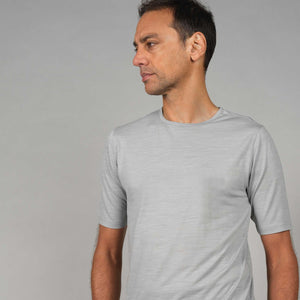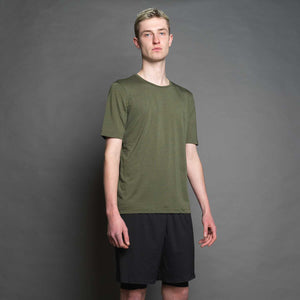Recently completely redesigned, ashmei’s Breton Jersey is the lightest we’ve ever produced. Constructed from repurposed materials and fixings, while also using our recycled Renew fabric, the result is a jersey that sits as lightly on the rider as it does the environment.
When we came to work on the styling, we decided to take one of the most instantly recognisable designs in fashion and reconnect it to the cycling culture of the region with which it’s associated.

The origins of the Breton stripe
First employed by the French Navy, since 1858 a striped top has been part of the service’s official uniform for seamen. With the exact number of stripes carefully regulated, the garment quickly became associated with the Atlantic-facing region of Brittany, from which most of the navy’s sailors were drawn. Since then a Breton top has come to describe any black or blue and white striped long-sleeve cotton top.
By 1928, the stripes had become so associated with this part of France as to be incorporated into the Gwenn-ha-du, the black and white flag of the region. Favoured by stars such as James Dean and Jane Birkin, and now worn across the world, this practical item of sailors’ uniform long ago earned an irrevocable slot in the cultural imagination.
Home roads for cycling greats
Cycling’s connection with Brittany comes about because besides providing excellent sailors, the windswept and rolling roads of the region have also produced an outsized number of exceptional cyclists.
Lucien Georges Mazan, better known as Lucien Petit-Breton, was born in Plessé in 1882. As a teenager, Lucien ditched his surname to become Lucien Breton in order to evade the wrath of his father, who disapproved of his cycling. Later, upon learning there was already another professional cyclist called Lucien Breton he added the diminutive Petit. As Lucien Petit-Breton he would twice win the Tour de France, first in 1907 and again in 1908. With his career cut short by the First World War, his death during the conflict near Troyes cemented his place in the pantheon of early cycling heroes.
After the Second World War, Brittany again provided cycling with one of its stars, this time to illuminate the sport’s golden era. Local son Louison Bobet won Monuments and stage races with equal panache, along with becoming the first rider to win the Tour de France on three successive occasions from 1953 to 1955. More recently, five-time Tour winner Bernard Hinault again brought attention to the region. Born into a farming family, after one of the most successful cycling careers ever that spanned the 70s and 80s, he returned to working the land.
A place apart
 With a climate more closely related to that of the UK than the more southerly parts of France, Brittany’s history, language, and Celtic origins have always set it apart.
With a climate more closely related to that of the UK than the more southerly parts of France, Brittany’s history, language, and Celtic origins have always set it apart.
Founded in 1984, partly to help fund teaching children to speak Breton, the region also has its own unique race, the Tro-Bro Léon. Held in Finistère, it’s often referred to as ‘Le Petit Paris–Roubaix’ or The Hell of the West due to its many sections of ‘ribinou’, gravel farm tracks that criss-cross the region’s fields.
Essentially gravel racing long before it was deemed cool, to win riders need to master several different surfaces, stay on the right side of the wind, and benefit from a degree of good luck. Cross the line first and you win a pig, along with probably never having to buy a drink in a local bar again.
Earn your stripes
Fortitude, unfussiness, and an innate stylishness on the bike. Traits all cyclists aim for and that are embodied by Britanny’s famous racing cyclists. Plus everyone looks good in stripes. It’s why we lighted upon this most archetypal of designs for our latest jerseys.
Available with the region’s classic bands stretched across a white, grey, or moss background, our Breton Jersey gives a subtle nod to this corner of France which has produced so many champions - along with something for its wearer to live up to.
You can shop the range here.




